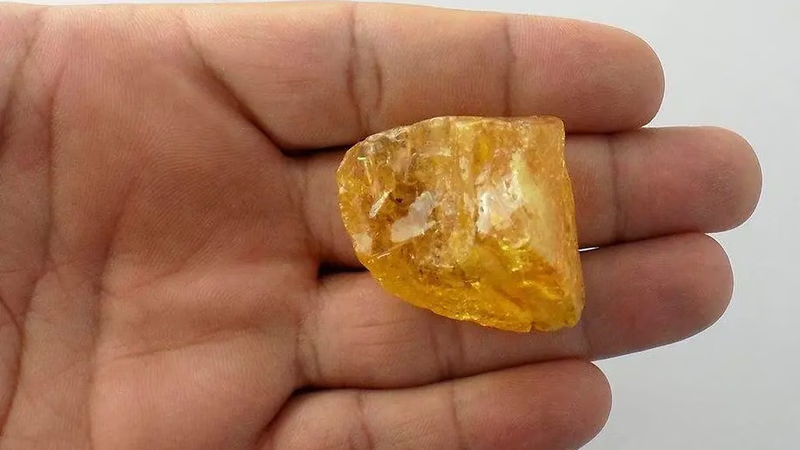
Amber gemstones showcase beauty and historical significance.
Amber has a long history of use by ancient civilizations. It has been found in archaeological sites dating back as far as the Stone Age. Amber was highly prized by ancient cultures for its beauty and believed mystical properties. Amber became a valuable commodity for trade in ancient times. It was often traded over long distances, and amber routes connected regions around the world. Baltic Amber, in particular, had significant trade routes established during the Roman Empire.
Amber held cultural significance in various civilizations. It was used for religious and ceremonial purposes, as well as for decorative objects, jewelry, and amulets believed to bring luck, protection, and healing properties. The Baltic region, particularly the countries of Lithuania, Latvia, and Estonia, is renowned for its Baltic Amber. Baltic Amber is considered some of the finest quality amber in the world. It is known for its rich colors, high clarity, and exceptional preservation of inclusions.
Each locality has its own unique characteristics, including color variations, inclusions, and overall quality. Baltic Amber remains one of the most highly regarded and sought-after sources due to its exceptional clarity and aesthetic appeal. Throughout history, Amber has captivated civilizations with its beauty and has played a significant role in art, culture, and trade. Today, it continues to be cherished as a gemstone and is used in jewelry, decorative objects, and even in scientific research and preservation.
Amber is often considered a gemstone, but it is not; it is the fossilized gum of ancient evergreen trees. The oldest original Amber gemstone discovered on Earth is about 320 million years old. In Asian cultures, the amber stone was considered the \"tiger spirit\" and the stone of courage. Pieces of amber were carried for protection during long journeys, and amber is also believed to balance emotions. The original amber stone absorbs negative energy and converts it into healing energy. Amber helps to balance emotions, clear the mind and release negative energy. Close your eyes now, imagine the incredibly powerful energy of amber and stay tuned for the rest of the article.
The Greeks and Romans had already discovered how amber originated. The Greek philosopher Aristotle described amber as \"succinum\" or \"water stone\". The Baltic Sea region has been a source of amber since ancient times. The Vikings traded amber for up to 800 years, and modern-day Scandinavia is still a major exporter of gemstones. Original amber is found all over the world, but the main source of high quality amber is from the Baltic States in northern Europe. The Dominican Republic is also a good source of amber gemstones, especially rare and very precious blue amber, which is also found in Britain, Poland, Russia, Italy and Germany.
The Dominican Republic in the Caribbean is another significant source of Amber. Dominican Amber is known for its wide range of colors, including rare blue and green variations. It often contains a variety of inclusions, such as insects, plant matter, and even small vertebrates. Mexico is known for producing high-quality Amber, particularly in the state of Chiapas. Mexican Amber exhibits a range of colors, including yellow, orange, and red, and often contains inclusions of insects and plant material.
Amber deposits can also be found in countries such as Poland, Russia (Kaliningrad region), Ukraine, and Belarus. These regions have been historical sources of Amber, although the quantity and quality can vary. Amber can be found in other parts of the world as well. For example, Amber has been discovered in Myanmar (Burma), Canada, the United States (particularly in the state of New Jersey), Lebanon, and various countries in Africa.
-
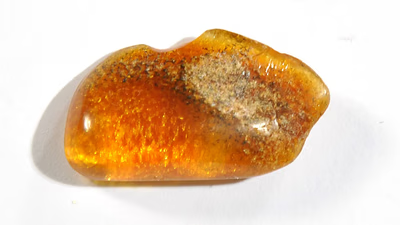
West Asian Amber features a diverse color spectrum, with honey-colored and cognac-colored amber being among the most sought after. Honey-colored amber displays warm golden shades, while cognac-colored amber ranges from light to deep reddish-brown hues. Cherry-colored amber, characterized by its reddish tones, adds to the variety. The primary source of amber is the coniferous plant Pinus succinifera, although other conifers produce lesser amounts. Over 250 color spectrums and seven main colors of amber have been identified, including yellow, orange, white, green, and blue. Yellow amber constitutes about 70% of global production and is primarily sourced from the Baltic Sea region. Green amber, which makes up about 2% of the spectrum, is created by heating yellow amber and is often paired with silver in jewelry making. Red amber is rare, found in only one out of every 200 samples, historically favored by the wealthy due to its scarcity.
Blue amber is the rarest type and changes color under fluorescent light. Other notable colors include butterscotch and olive-colored ambers. Each type has unique characteristics that influence its market value and appeal in jewelry design.
-
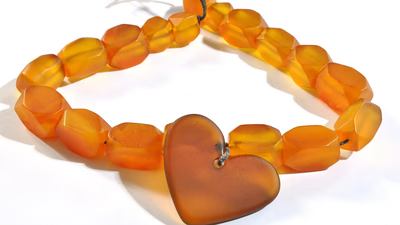
The Asian market plays a crucial role in the global amber gemstone trade, with countries like China, India, Thailand, and Hong Kong leading in both domestic and international sales. The growing consumer base in Asia has heightened the demand for amber due to its cultural significance and perceived healing properties. Buyers and sellers are encouraged to research prices and work with reputable sellers to ensure fair transactions. Online platforms have gained popularity, offering convenience and access to a diverse range of amber gemstones. These platforms often feature special deals that can lead to attractive pricing. Understanding local regulations regarding import/export and ensuring gemstone authenticity is vital for smooth transactions. Direct purchasing from production units is a cost-effective method for buyers, allowing them to acquire high-quality amber at reasonable prices. The proximity to production sources and skilled artisans contributes to competitive pricing in the Asian market. Additionally, various trade shows and exhibitions provide opportunities for networking among buyers and sellers, showcasing a wide array of gemstones including amber.
-

Amber has been valued since ancient times, with archaeological evidence tracing its use back to the Stone Age. It was traded extensively, particularly Baltic Amber, which became a significant commodity during the Roman Empire. This gemstone held cultural importance across various civilizations, often used in religious ceremonies and as decorative items believed to possess protective and healing properties. The Baltic region, especially Lithuania, Latvia, and Estonia, is renowned for its high-quality amber known for its rich colors and clarity. Each locality offers unique characteristics that enhance its desirability. Today, amber continues to be cherished in jewelry and scientific research. While often mistaken for a gemstone, amber is actually fossilized tree resin. The oldest known amber dates back approximately 320 million years.
In Asian cultures, it symbolizes courage and protection during journeys. The Greeks and Romans recognized its origins, with Aristotle referring to it as "succinum. " Modern sources of amber include the Dominican Republic, known for rare blue variations; Mexico"s Chiapas region; and historical sites in Poland, Russia, Ukraine, and Belarus. Amber"s global presence extends to Myanmar, Canada, the U. S. , Lebanon, and parts of Africa.
-
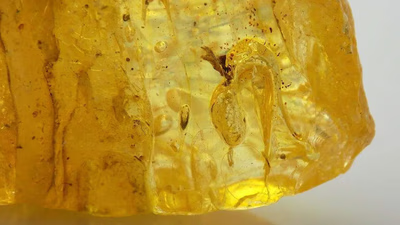
The original Asian Amber gemstone, often referred to as Baltic Amber, is associated with various benefits for the body and mind, primarily rooted in traditional beliefs and alternative healing practices. Advocates claim that Amber has a calming effect, promoting relaxation and reducing stress and anxiety. It is also thought to absorb negative energies and convert them into positive ones, enhancing emotional stability and vitality. Many users wear Amber jewelry or utilize Amber-infused products to experience these purported effects. The gemstone is believed to possess anti-inflammatory properties due to its succinic acid content, which may aid in reducing pain and supporting immune health. Additionally, Amber is linked to emotional support, helping alleviate feelings of depression and fostering a more optimistic outlook. Its therapeutic applications are extensive, including treatments for conditions such as arthritis, asthma, eczema, and more. While many individuals find value in these claims, it is essential to approach them with caution as scientific evidence may not fully support these assertions.
Consulting healthcare professionals for specific health concerns remains advisable. Overall, the perceived advantages of Asian Amber highlight its role as an energetic purifier that can transform negative energies into positive frequencies.
-
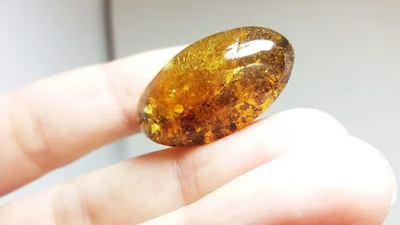
Amber gemstones are valued based on their design, quality, and origin. Unique patterns, inclusions, and vibrant colors significantly enhance their worth. The craftsmanship involved in shaping and polishing the gemstone also plays a crucial role in pricing. Regions like the Baltic are renowned for high-quality Amber, which can command higher prices due to their reputation. Factors such as the type of stone, design quality, and quantity ordered influence pricing. Additionally, Amber"s ability to preserve ancient inclusions adds to its desirability among collectors. Treatments like heat enhancement can affect value; untreated stones are generally more sought after. Market dynamics, including supply and demand fluctuations, also impact pricing trends.
Buyers should seek reputable sellers for original Amber gemstones with exceptional designs at reasonable prices. "





